Any grill master, chef, or home cook should be able to read beef’s internal temperatures. Everything you need to know about the various levels of doneness as well as ideal internal temperatures for various types of beef can be found right here!
Medium Rare Steak Temp
- If using frozen steak, let it thaw in the fridge over night first.
- Before cooking, allow your steaks to sit out for 30 minutes to reach room temperature. This ensures your beef will cook evenly.
- Season steaks liberally on both sides with your preferred seasoning.
- Always check the doneness of your steaks with a meat thermometer.
- When your steaks are 5 degrees below the temperature you want to serve them, turn off the heat.
- Always let your steaks rest for at least 8 to 10 minutes after cooking.
- Slice against the grain after resting.
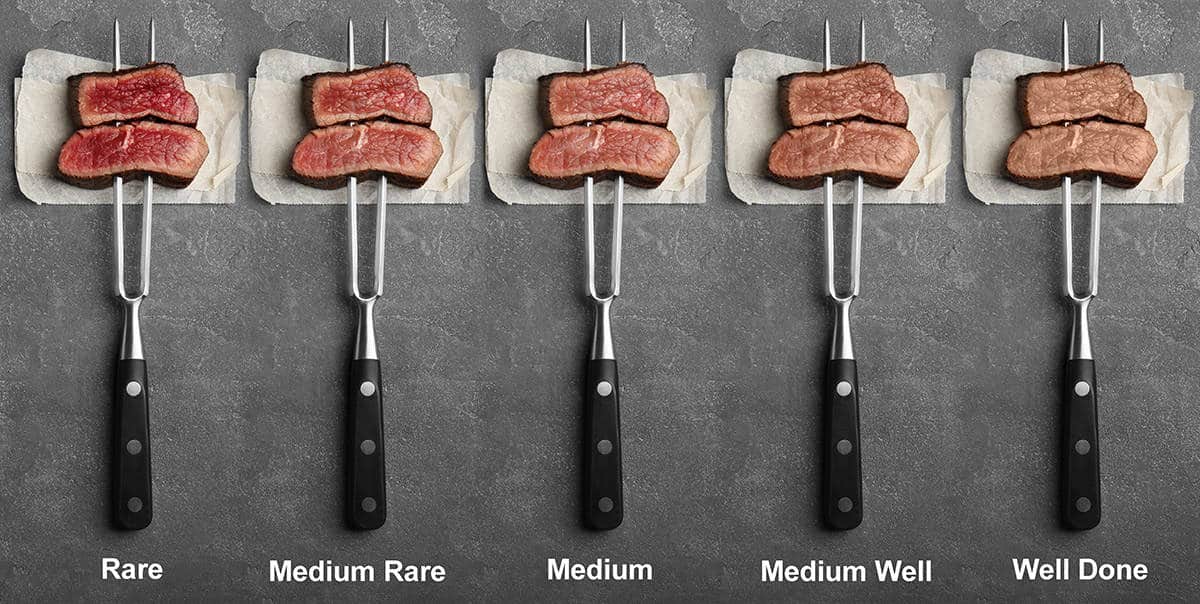
How to Cook Steak Perfectly
My personal favorite cut of steak to cook is ribeye. It cooks up tender and flavorfully on the stove and grill, and it’s simple to master. You can learn how to make the ideal ribeye steak by reading my guides on how to cook steak on the stove and how to grill steak to perfection!
How to Cook Steak on the Stove
- Preheat the oven to 450°F. While the oven is heating up, place a cast-iron pan or another oven-safe pan inside for five minutes. Meanwhile, season the steak with salt and pepper. Using oven mitts, carefully remove the skillet once the oven is hot and set it over medium heat.
- In the skillet, place the ribeye steak and sear it for 2 minutes on each side. Garlic and thyme should be sprinkled over the steak before returning the skillet to the oven for 6-7 minutes.
- Carefully take the pan out of the oven after 6-7 minutes and put it back on the stovetop with low heat. Flip the steak and top with butter. Carefully tilt the pan while holding it with pot holders and pour the melted butter, garlic, and thyme over the steak for about three minutes. Cook to the desired doneness with an instant-read thermometer.
- Before cutting and serving, let the dish rest for at least 10 minutes. Cut against the grain for best results. Enjoy!.
See the full post for more info: Pan-Seared Ribeye Steak
| Desired Doneness | Total Time to Cook |
|---|---|
| Rare | 11-13 minutes for 1″; 13-15 minutes for 1.5″ |
| Medium-rare | 12-14 minutes for 1″; 14-16 minutes for 1.5″ |
| Medium | 13-15 minutes for 1″; 15-17 minutes for 1.5″ |
| Medium-well | 14-16 minutes for 1″; 16-18 minutes for 1.5″ |
| Well-done | 15-17 minutes for 1″; 17-19 minutes for 1.5″ |

How to Cook Steak on the Grill
- generously season your steak on both sides with the seasoning of your choice. Allow the steaks to sit at room temperature for at least 30 minutes after seasoning.
- Set the grill to high heat, 450–500°F for the ideal temperature for cooking beef. With the lid off, sear steaks for 3 minutes on each side. After that, lower the heat to medium-low, cover the pan, and cook the steaks until they are cooked to your liking.
- Take steaks off the grill and top with compound butter flavored with garlic. Before slicing into steaks, let them rest for 10 minutes. For best results, slice against the grain.
See the full post for more info: Grilled Ribeye Steak
| Desired Doneness | Total Time to Cook (Gas or Charcoal) |
|---|---|
| Rare | 8-11 minutes for 1″; 11-14 minutes for 1.5″ |
| Medium-rare | 9-12 minutes for 1″; 12-15 minutes for 1.5″ |
| Medium | 10-13 minutes for 1″; 13-16 minutes for 1.5″ |
| Medium-well | 12-15 minutes for 1″; 15-18 minutes for 1.5″ |
| Well-done | 14-16 minutes for 1″; 16-18 minutes for 1.5″ |
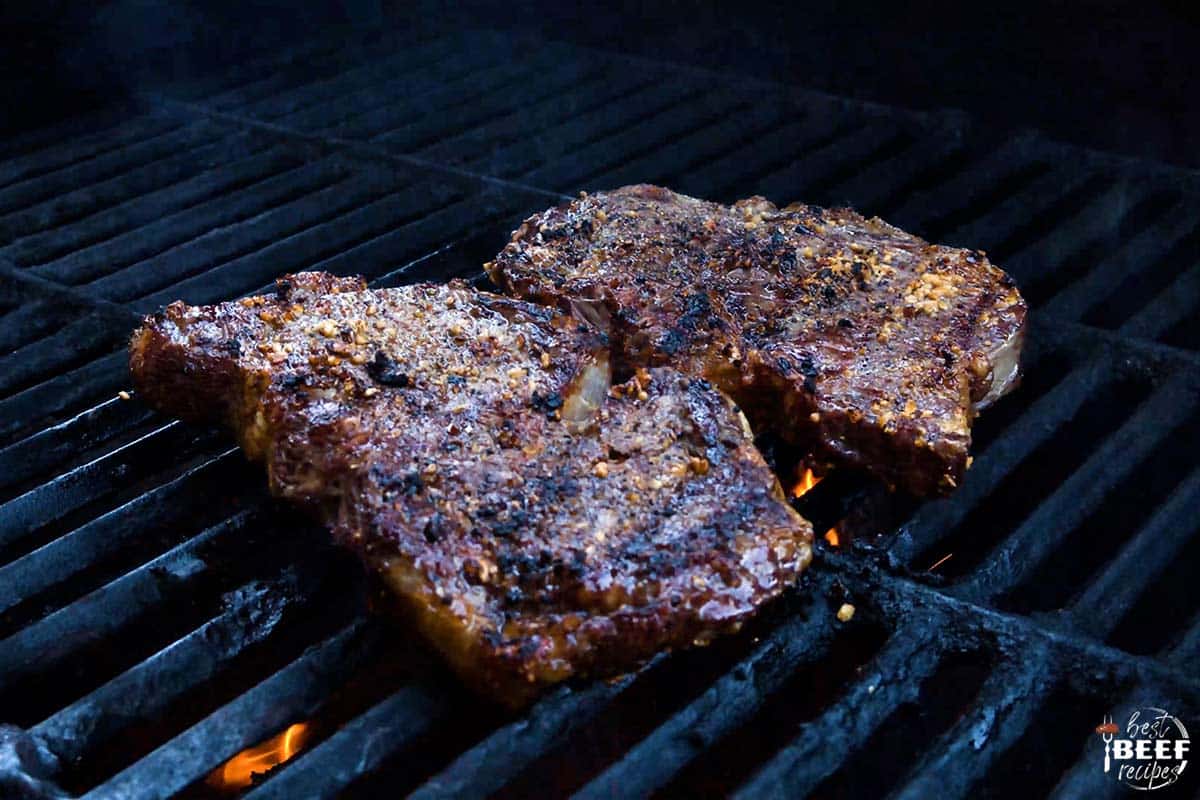
You are ready to try one of our steak dinner ideas now that you are aware of the ideal steak temperatures. Dont forget my guides on Tenderizing Steak and Salting Steak!.
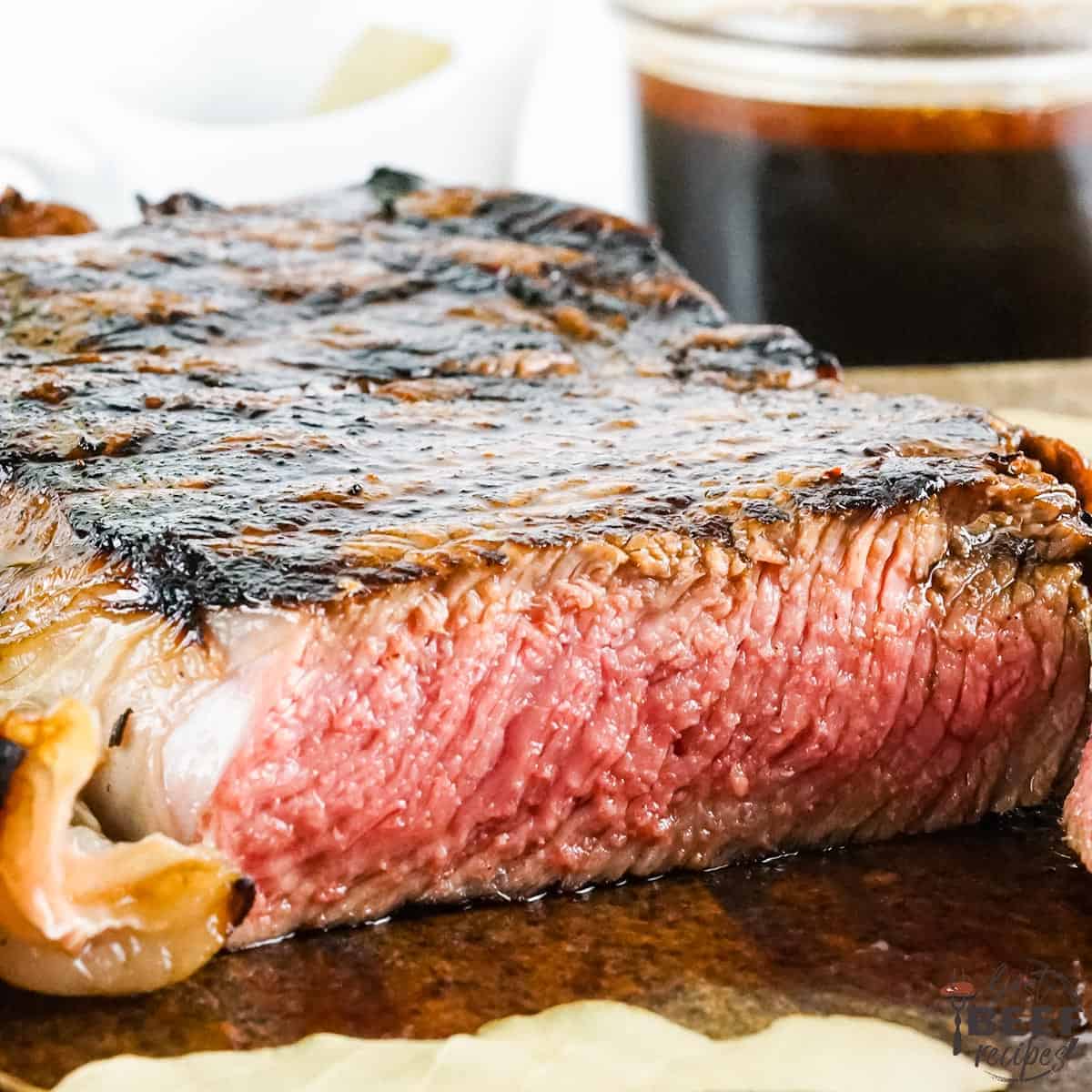
For best results, use a meat thermometer to check the beef’s internal temperature.
| Beef Doneness | Internal Temperature |
|---|---|
| Rare beef temp | 125°F – bright red in the middle |
| Medium-rare roast | 135°F – warm red in the middle with slight pink around the edges |
| Medium roast | 145°F – warm pink throughout |
| Medium-well roast | 150°F – slightly pink at the center |
| Well-done roast | 160°F -fall-apart shredded beef |
Check out all our best pot roast recipes!
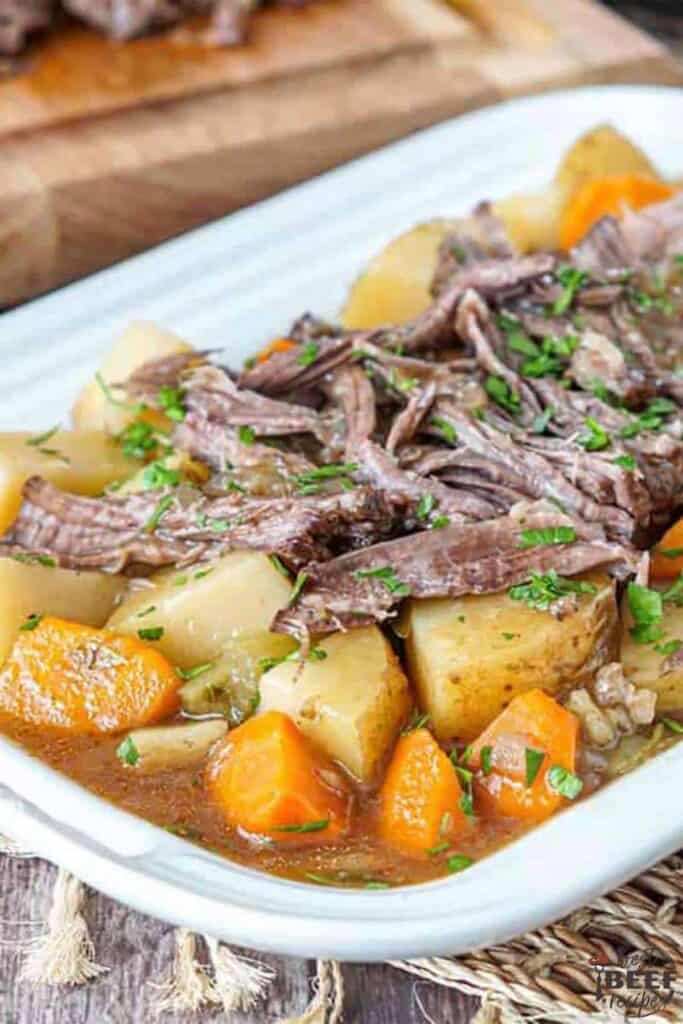
Prime Rib Roast Temps
Beef Roast recipes are our specialty. You can use this roast beef temperature chart regardless of the method you use to cook your beef, whether you smoke your prime rib or cook it in the Instant Pot.
The USDA suggests roast beef be cooked at a minimum temperature of 145°F. See my prime rib temperature chart for more information about prime rib in-depth.
| Beef Doneness | Internal Temperature |
|---|---|
| Rare beef temp | 125°F – bright red in the middle |
| Medium-rare roast | 135°F – warm red in the middle with slight pink around the edges |
| Medium roast | 145°F – warm pink throughout |
| Medium-well roast | 150°F – slightly pink at the center |
| Well-done roast | 160°F – little to no pink throughout |
Best Prime Rib Recipes
Our absolute favorite Prime Rib Seasoning!
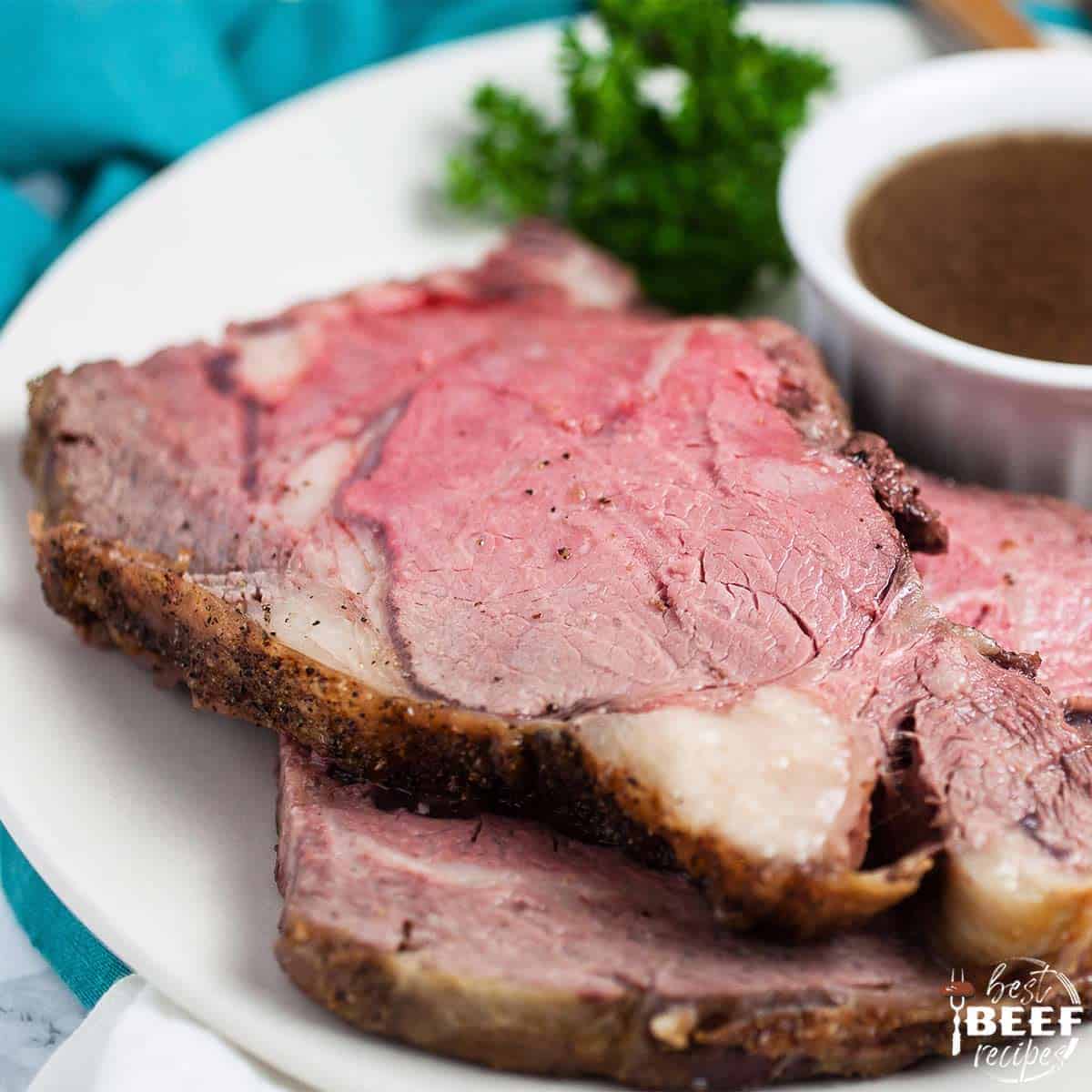
Burgers are a staple at my house. We never get sick of a good burger, whether it’s grilled burgers with a fried egg on top or air-fried burgers with garlic butter spread.
Despite how frequently I make hamburgers at home, one thing has consistently held true. How do you know when a burger is done? How do you get that perfect, juicy medium-rare burger? It can be challenging to achieve the precise temperature you desire.
Luckily, I have a few tricks to share with you. Above all else, you should travel prepared with my guide to cooking burgers. With the help of this simple burger temperature chart, you can easily reach the desired level of doneness without having to guess. Just be sure to check the minimum safe temperature with a meat thermometer!
The USDA advises cooking ground beef to a minimum final temperature of 160°F. See How Long to Cook Burgers for more details, and read How to Cook Burgers for more advice.
| Doneness | Temperature | Appearance |
|---|---|---|
| Rare | 120-125°F | Bright reddish pink throughout |
| Medium-rare | 130-135°F | Pink throughout |
| Medium | 140-145°F | Slightly pink at the center |
| Medium-well | 150-155°F | Mostly brown throughout, with some pink |
| Well-done | 150-155°F | Brown throughout |
Burger Temp Chart FAQs
The USDA advises a meat thermometer reading of between 160°F and 165°F for ground beef. This results in a well-done burger. Remember that beef continues to cook for a short period of time after being removed from the heat source, so turn off the heat 5 degrees below the level of doneness you prefer for your burgers (so, for example, at 150°F to 155°F if cooking to well-done). For other temperatures, see my burger cooking chart below.
The heat source, the thickness of the beef patty, and the level of doneness you prefer will all affect how long a burger takes to cook. Thicker patties, like those in my Egg Burger Recipe, will take longer to cook than thinner ones, like those in my Smash Burger Recipe. To determine the internal temperature of your beef, it is best to use a meat thermometer rather than relying on an exact time.
While checking the doneness of beef without a meat thermometer is possible, it is not always reliable. The only way to determine whether a burger is cooked through without a meat thermometer (and without slicing it open!) is to press the part of the burger that is thickest, usually the center, and feel how soft it feels. It’s more cooked if it’s firmer and less soft and squishy, which is closer to rare.
How to Grill the Perfect Burger
- Gently combine your ground beef with your preferred seasoning before forming it into equal-sized patties. Chill in the refrigerator. Burgers hold together better and are more juicy when chilled than other meat cuts.
- Add to the grill or grill pan over high heat. If using a grill pan, lightly grease it with oil. Once hot, add the chilled patties to the grill.
- When the first side no longer adheres to the grill, flip. The burger is not yet ready to be flipped if it still adheres to the pan. Use a meat thermometer to check the internal temperature of the burger patties as they are being cooked to the desired level of doneness. In order for the cheese to melt on top, you can add it in the final 1-2 minutes of cooking.
- Add toppings of choice, serve, and enjoy!
- Always remove your burgers from the heat 5°F before you want them to be done. For instance, if you want medium-rare hamburgers, remove them from the heat when they reach at least 120°F.
- Let your beef rest after cooking for the best results. All of the juicy goodness will leak out of the burgers with the first bite if you serve them right away without letting them rest.
- Always check the doneness of a burger with a meat thermometer. When cooking any meat at all, it will truly make your life so much simpler. Every measurement on my beef temperature chart is taken with a thermometer.
- When adding cheese to a burger, do so in the final 1-2 minutes of cooking, just before the burger is ready to be removed from the heat. Youll get that perfect melty cheese.
- My burger temperature chart is applicable to both stovetop and grill-cooked burgers, as well as burgers prepared using other techniques like air frying or smoking. The temperature you aim for will always remain the same.
How to Defrost Frozen Burgers
Using frozen patties to create perfect burgers is absolutely possible. You should fully defrost any frozen patties you intend to cook before thawing them. The best way to defrost hamburgers is to leave them in the refrigerator overnight so you can cook them the next day, but if you’re in a hurry, there are other ways to do it.
- Burgers should be defrosted in the refrigerator overnight for the best and safest method. Always place a paper towel or other barrier underneath the defrosting hamburgers to stop any potential leakage into your refrigerator. Trust me.
- A quick method: defrost burgers using the microwave. Your ground beef should be placed on a plate in a bag that can be heated in a microwave. Use the defrost setting on your microwave or the low heat setting. Defrost the beef for three to four minutes, flipping it over halfway through. If using this defrosting technique, cook the food right away; otherwise, it is dangerous.
- Defrost in cold water: Cold water can be used to defrost hamburger beef. The package of beef will start to defrost when placed in a bowl of cold water. For safety purposes, change the water every 30 minutes with new, icy water.
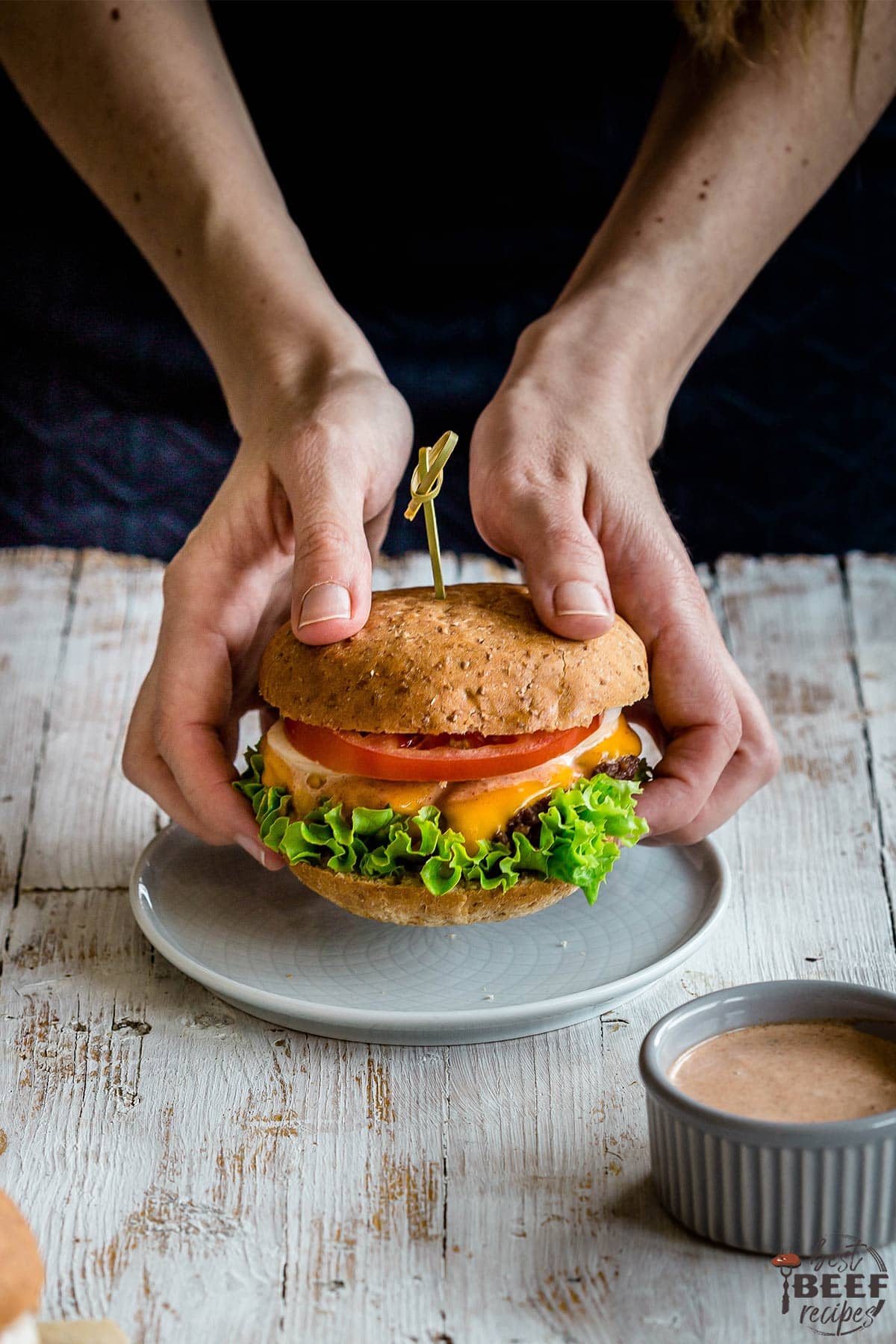
My incredible Special Burger Sauce is one of the best burger sauces you can serve with a burger. This recipe for sauce is incredibly flavorful and works well with beef burgers. Serving burgers with garlic butter sauce is another popular choice. You can also try more of my recipes for sauces for meat!
My Burger Seasoning Recipe is by far the best burger seasoning. I love it with my best burger recipes, and you will be blown away by the flavor this burger seasoning adds to your favorite burger.
I’m sure you’ll find a new favorite on this list of my best burger recipes when you’re ready to put your newly acquired skills to the test by preparing burgers:
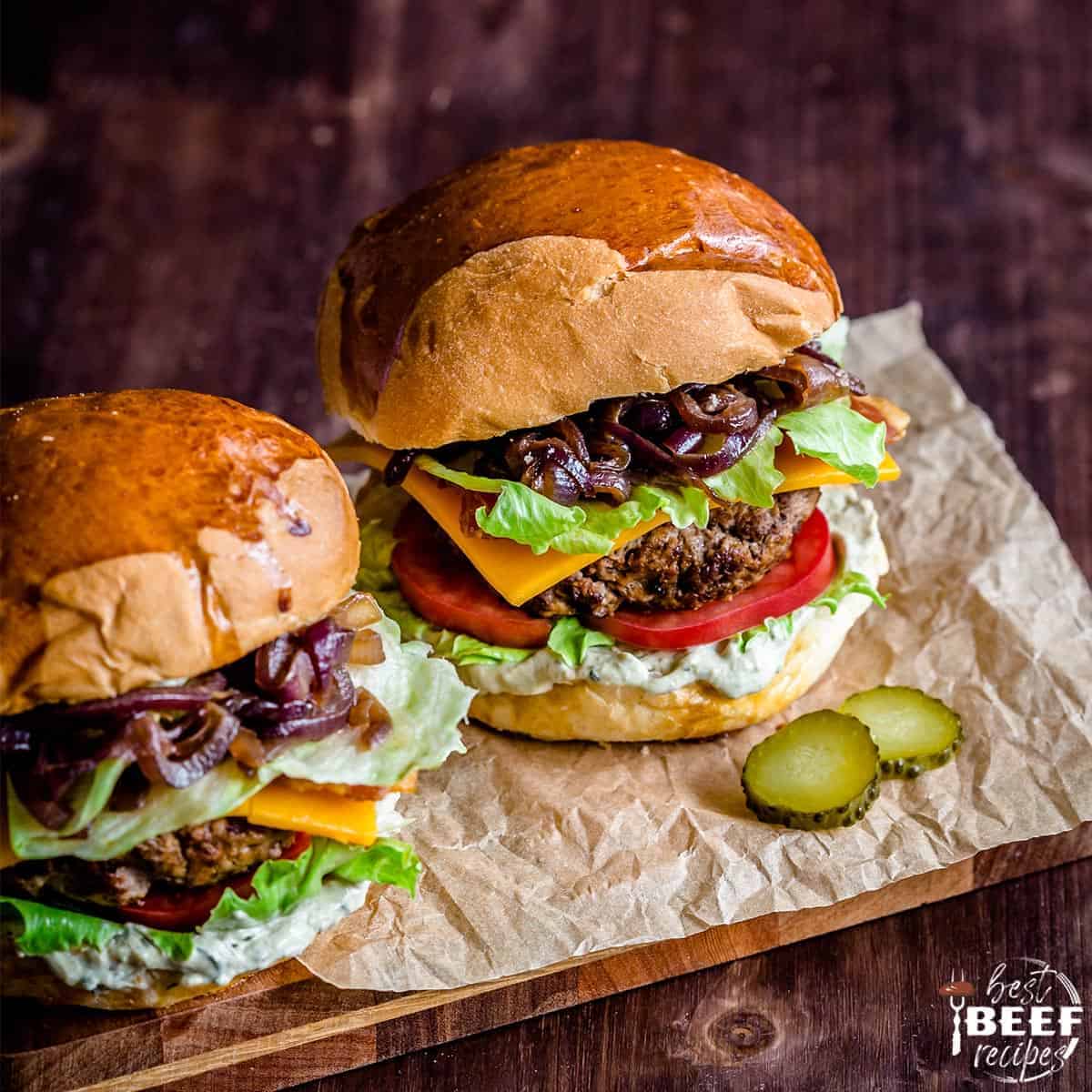
Internal Temp for Meatballs
Always prepare your meatballs to an internal temperature of 160 degrees Fahrenheit using an instant-read thermometer.
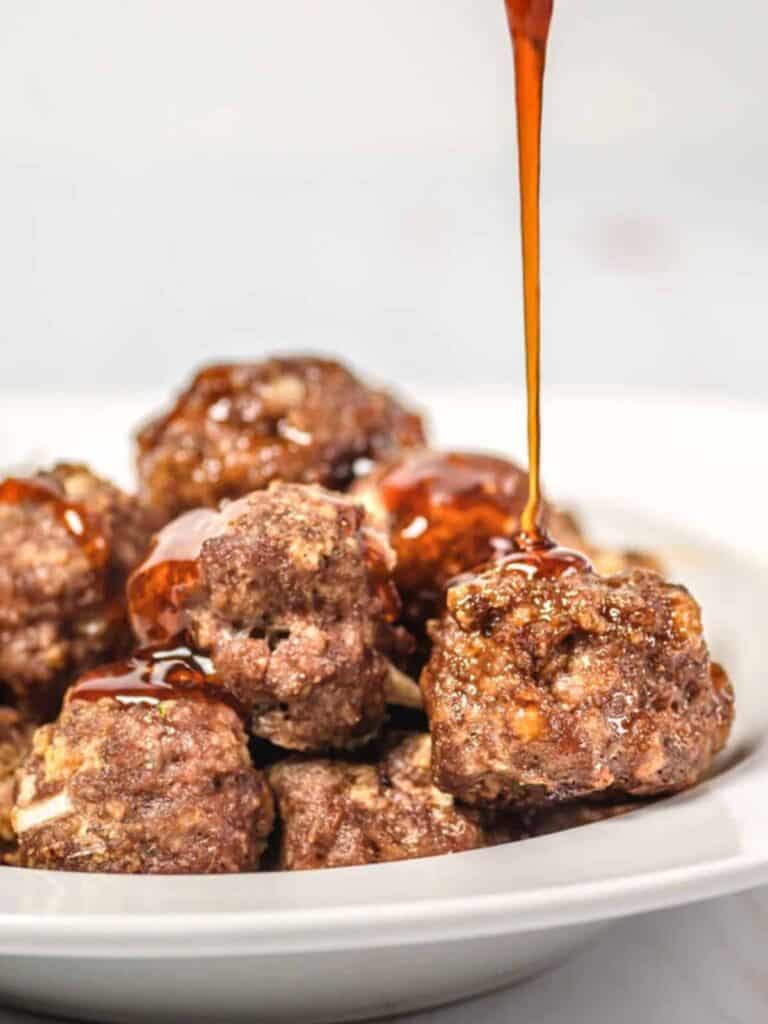
Internal Temp for Meatloaf
The ideal temperature for meatloaf is 160°F. Always check the internal temperature of your meatloaf with a meat thermometer before removing it from the oven.
This Cheesy Keto Meatloaf Recipe, which uses our own homemade meatloaf seasoning, is by far our favorite meatloaf recipe. It is out of this world!.
There is something so incredibly delicious about a brisket. My preferred method for preparing beef brisket is to smoke it. I advise smoking it without the wrapper until the brisket reaches a temperature of 165°F. Then, wrap it in foil. Once your smoked brisket internal temp reaches 205°F, its ready.
When you want to set it and forget it while still serving a delicious meal, slow cooker brisket is another flavorful method of preparing a brisket.
The Tri-Tip Steak is cut pieces of the triangular tri-tip. It is also known as triangle steak. It has become extremely popular because of its superior flavor.
This smoked tri-tip recipe, which is flavorful and scrumptious, is my favorite way to prepare tri-tip.
Always cook it to the same level of doneness as you would a steak.
| Doneness | Temperature | Appearance |
|---|---|---|
| Rare Tri-tip temp | 125°F | bright red in the middle |
| Medium-rare Tri-tip temp | 135°F | warm red in the middle |
| Medium Tri-tip temp | 145°F | warm pink at the center |
| Medium-well Tri-tip temp | 150°F | slightly pink at the center |
| Well-done Tri-tip temp | 160°F | little to no pink throughout |
- Use an instant-read thermometer or meat thermometer.
- With the tip facing the center, insert the thermometer through the side of the beef. Dont touch fat or bone for a proper read.
- When burgers and steaks are five degrees less done than what you prefer, remove them from the heat.
- Roast beef should be taken off the heat when it is between 5 and 10 degrees short of being done.
- After cooking, let the beef rest to seal in the juices and finish the process to the desired level of doneness.
- Follow this guide with our Best Cuts of Beef.
Beef Internal Temps Chart (Printer-Friendly)
Click here to print the handy beef temperature chart for quick reference and to keep with you at all times.
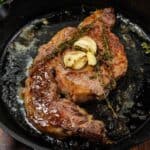
Steak Temps – How to Cook Steak Perfectly
- 1 Cast-iron pan if cooking on the stove
- Grilling tongs if cooking on the grill
- Meat thermometer
- Steak knife
- Cutting board
For cooking steak on the stove
- 1 large thick-cut ribeye steak
- ½ teaspoon kosher salt
- ¼ teaspoon freshly cracked black pepper
- 2 thyme sprigs
- 2 garlic cloves
- 4 Tablespoons butter
For cooking steak on the grill
- 1 large thick-cut ribeye steak
- seasoning of your choice
Check out our Beef Temperature Chart for useful advice on how to cook any beef cut!
How to Cook Steak on the Stove
- Preheat oven to 450°F. Place a cast iron pan or other oven-safe pan in the oven to heat it for 5 minutes. Meanwhile, season steak with salt and pepper. Using oven mitts, carefully remove the skillet once the oven is hot and set it over medium heat. 1 thick-cut, large ribeye steak, 1/4 teaspoon freshly cracked black pepper, and 1/2 teaspoon kosher salt
- In the skillet, place the ribeye steak and sear it for 2 minutes on each side. Place the skillet back in the oven for 6-7 minutes after adding the garlic and thyme to the top of the steak. 2 garlic cloves, 2 thyme sprigs .
- After 6-7 minutes, carefully take the pan out of the oven and reposition it over low heat. Flip the steak and top with butter. Pour the melted butter, garlic, and thyme over the steak for about three minutes while carefully tilting the pan with pot holders. Using an instant-read thermometer, cook to the desired doneness (see the post for a chart). 4 Tablespoons butter .
- Prior to cutting and serving, let the dish rest for at least 10 minutes. Cut against the grain for best results. Enjoy! .
How to Cook Steak on the Grill
- generously season your steak on both sides with the seasoning of your choice. Allow the steaks to sit at room temperature for at least 30 minutes after seasoning. 1 large thick-cut ribeye steak, seasoning of your choice .
- Preheat outdoor grill to high heat, about 450 to 500°F. With the lid off, sear steaks for 3 minutes on each side. When the steaks are done to your liking (see post for chart), lower the heat to medium-low and keep the lid on while cooking.
- Remove the steaks from the grill and top with one tablespoon of compound butter with garlic. Before slicing into steaks, let them rest for ten minutes. Slice steaks against the grain.
- Allow your steaks to come to room temperature. Leave your steaks out for 30 minutes before cooking because if you put them in a hot pan while they’re still cold, they’ll shrivel and lose their tenderness and juice.
- When your steaks are getting to room temperature, if you have time, salt them. Every bite of the steak will have the perfect amount of flavor because internal moisture will rise to the surface. Before placing the steak in the hot cast iron skillet, be sure to pat the steak dry to remove any excess moisture.
- To achieve the perfect sear, use a cast iron pan that has been heated to a temperature of 450°F for five minutes.
- Do not crowd your pan. Working in batches will ensure that you get the best results when cooking multiple steaks at once.
- Spend some time basting your ribeye in the butter, thyme, and crushed garlic. For maximum flavor, generously coat the ribeye with this mixture!
- To achieve the desired level of doneness, use a meat thermometer.
- Let the steaks come to room temperature first. This ensures that they will cook evenly and takes about 30 minutes.
- Patting down the seasoning ensures that your rib eye steak has a perfect crust when grilled.
- Allow the steaks to rest for at least 10 minutes before slicing into them.
- Always slice steak against the grain.
- For best results, use a meat thermometer to check the meat for the desired level of doneness.
From Rare to Well-Done: Meat Temperatures for Perfect Steaks
FAQ
What temp is medium well for beef?
The internal temperature of a medium-rare steak should be between 150° and 155°, so you should remove it from the grill or pan as soon as it reaches 145°. After that, allow it to sit for 5 to 10 minutes so that the carryover cooking can be completed before you take a bite.
Is beef cooked at 135?
130–135°F for medium rare and 135–145°F for medium steak.
Is beef done at 150 degrees?
Internal Beef Roast or Steak Temperatures The USDA advises cooking beef to an internal temperature of 145°F (63°C). At this temperature, the USDA guarantees that any potential bacteria have been killed by the heat.
Is beef safe at 120?
All raw beef, pork, lamb, and veal steaks, chops, and roasts should be cooked to a minimum internal temperature of 145 °F as measured with a food thermometer before the meat is taken off the heat source.
